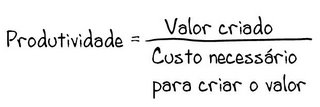Part I, Part II, Part III e Part IV.
Let us go back to the last picture of Part IV ...
... and let us select the elements of the cause-effect relationship that are in red.
These elements are coded because they were written by someone individually, ideally even anonymously, so that the elements are more freely evaluated by all.
And now, with the group in front of the relationship we can ask:
- Why does A2 happen? What may be behind A2?
- Why does B2 happen? What may be behind B2?
Speculation will start to arise and we may agree on a first cause
Whe have safety accidents
because staff do not know the risks.
Why staff do not know about security risks?
Staff do not know about security risks
because we do not train staff.
E also have staff accidents
because we have no safety protection systems in place.
Good practice is to ask "why" at least 5 times. In this way we move towards root causes, something that influences the end result and can be manipulated by us.
Successively asking why sometimes leads us back to a point already described, namely:
Do you see that? Do you see a loop there?
This technique leads us to identify a
cycle that conspires in a normally dangerous way. Especially when they have
the power to accelerate autocatalytically. The more accidents occur, the more potential is created for new accidents to occur in the future. Who taught me the ABC of systemic thinking, Peter Senge, places at the center of these cycles the icon of an avalanche descending through a mountainous ridge. The farther down, the more voluminous and destructive the avalanche.
We do not train staff because we have no time available for training.
Why do we have no time available for training staff? Because we lack human resources!!! So, we went back to the starting point.
The exercise should also be done by looking ahead for the future. Can any of the post-its on the board be the cause of something still to describe?
Now instead of "why" I use the expression: "And" as a way of appealing to a criterion of importance.
For example: we lack human resources. And? Why should we worry about this? What may be the consequences of this situation?
If staff is lacking, then existing staff must systematically extend their working hours.
The SME owner could comment:
- And? or "So what?" This is not a problem. I do not pay them overtime.
- OK! And what can happen because of the systematic use of overtime, paid or unpaid?
- People saturate, get tired, want to live their extra work life.
- And?
- Some say goodbye and leave the company. Others begin to fall ill and often fail to come to work. Others come to work, but without the necessary attention.
- And?
WOW! See what just happened?
We identified three more cycles that conspire to maintain and worsen the status quo. How can a company aspire to enter a virtuous cycle if, in this restricted scope alone, we find four vicious cycles. And as long as these cycles are not broken we are wearing bandages, we are making corrections, we are feeding imbalances that we will sooner or later be unable to contain, to hide, to control.
For simplification let us only use three cycles:
Now we have to identify all sticky notes that have no upstream arrows, no upstream causes, they represent root causes, they are root causes. In our example we have (see the yellow sticky notes):
Let us also identify sticky notes that include "no(t)", things we don't have or don't do:
Strategic initiatives will be projects, action plans, dedicated to surgically eliminating root causes and the various "no(t)".
Remember the figure of the monstrous earthmoving machine in part III?
I use it to get here and to highlight the specificity of what is going to be proposed, the degree of detail, as well as the authorship of these proposals, people who suffer from these problems and who are involved, challenged to give their opinion. People with tremendous motivation to perform, because it is their everyday work and they were the creators of the action plan.
Going back to the sticky notes, now of another color, we can place over each root cause or no(t), one or more elementary actions to eliminate these causes.
"Streamline staffing" (we often don't need to hire more people, we just need to transfer people from some sectors to others) to eliminate "The staff number is very restricted"
First "Update job descriptions and competence requirements", then "Train staff" to eliminate "We do not train staff"
"Allow time for training" (be creative, you don't need to do training seated in a room, on-job-training? games? films?) to eliminate "No time available for training"
"Design and implement safety protection systems" to eliminate "We have no safety accident protection systems"
If we impleent those actions what will, most likely, happen? See the green sticky notes
But ...
If we no longer have lack of human resources... staff no longer needs to systematically extend working hours... Do you know what that means?
The chain of effects downstream no longer happens!!!
So, what do we need to do?
How to turn this into an action plan, a strategic initiative?
We have to answer the questions:
Who? When? Sequence? Time? Cost?
Et voilá!
We come to a detailed action plan arising from the strategy described in the strategy map.
Normally a team of 6 or 7 can generate 3 to 5 pages like this one:
Using the technique of sticky notes with different colors (gray is action; green is something you cannot change)
Then we list all gray sticky notes ...
... and start to make groups of gray sticky notes around a common theme. For example:
- marketing and brand
- production and efficiency
- innovation and interested parties
- marketing and influencers.
What do you think about this technique?
Would you like to try it?

%2010.41.jpeg)
%2015.07.jpeg)
%2015.19.jpeg)
%2015.28.jpeg)
%2015.28%20(1).jpeg)
%2015.38.jpeg)
%2016.03.jpeg)
%2016.18.jpeg)


%2010.02.jpeg)
%2010.02.jpeg)
%2014.57.jpeg)
%2010.35.jpeg)
%2010.53.jpeg)
%2010.55.jpeg)
%2010.58.jpeg)
%2012.43.jpeg)
%2014.57.jpeg)
%2010.30.jpeg)
%2010.41.jpeg)
%2014.24.jpeg)
%2014.24%20(1).jpeg)
%2014.25.jpeg)
%2016.41.jpeg)
%2013.30.jpeg)
%2013.35.jpeg)
%2014.04.jpeg)
%2014.16.jpeg)

%2014.50.jpeg)
%2013.46.jpeg)

%2011.27.jpeg)
























%2006.21.jpeg)












